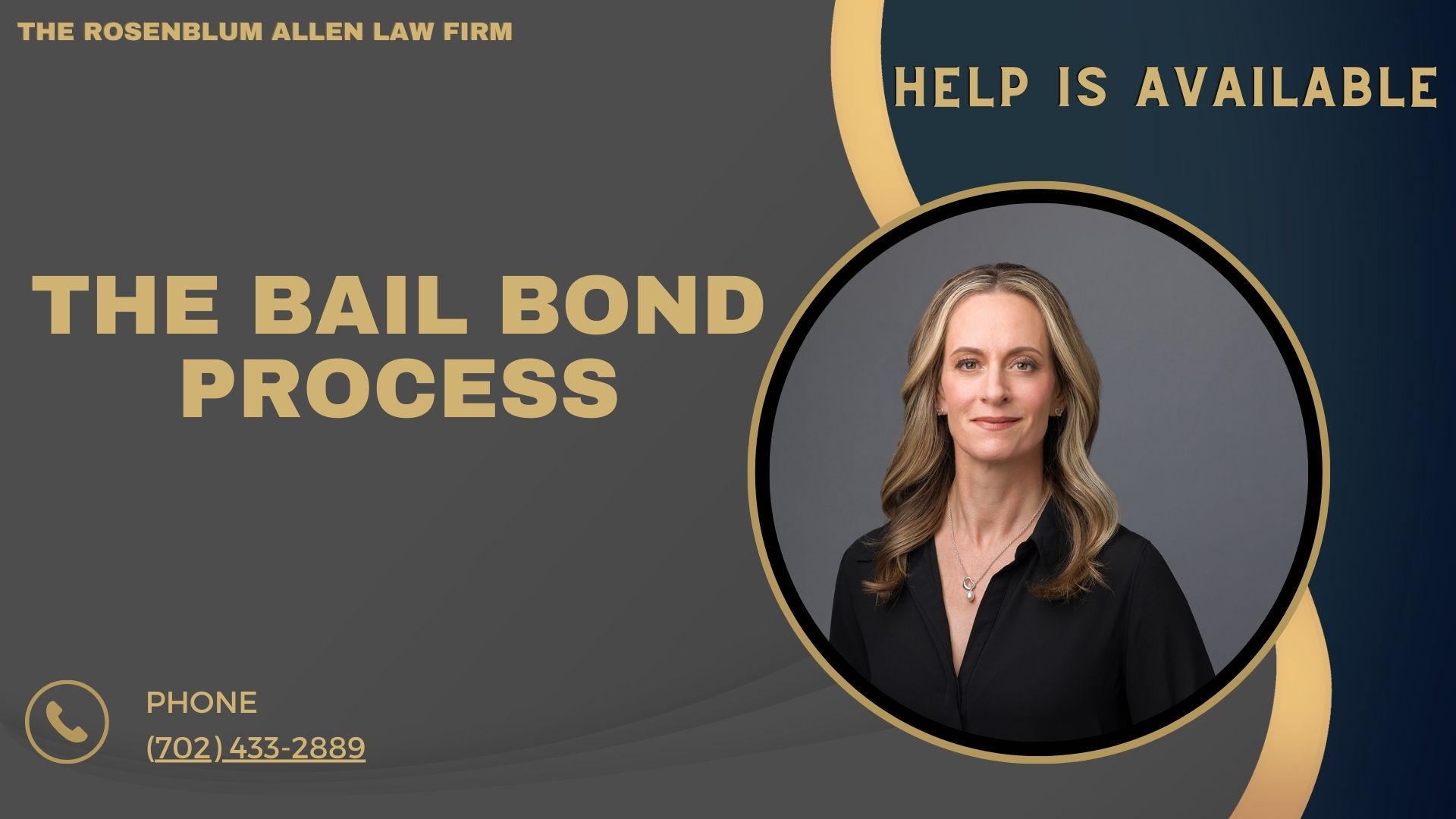Bail bonds are key to the US justice system. They let accused people stay free while awaiting trial. Understanding how this process works can be crucial if you or someone you know has been arrested. This guide aims to demystify the bail bond process. It covers each step, from arrest to possible release. It ensures you are well informed and prepared.
Note: Make sure to also check out our Do You Get Bail Money Back in Nevada and Arrest Process Nevada posts while you’re here.
What is Bail?
Definition of Bail
Bail is a set amount of money that acts as insurance between the court and the person in jail (the defendant). The court sets the bail amount. It is to ensure the defendant returns for their court dates while awaiting trial.
Purpose of Bail in the Judicial System
The main purpose of bail is to let a defendant stay free until proven guilty. They can keep asserting their innocence until a verdict. This system helps balance the judicial process. It ensures that only some accused of a crime must stay in jail until their trial.
Types of Bail
Several types of bail are available, each serving different circumstances and financial situations. Understanding these options can help defendants and their families. It will help them make informed decisions about their cases and costs.
Cash Bail
This involves paying the full bail amount in cash. The amount is returned if the defendant follows the bail conditions. They must go to all court appearances. Some fees are taken out.
Surety Bond
This is also known as a bail bond. It involves a bail bondsman. They guarantee payment of the full bail to the court if the defendant fails to appear. The defendant typically pays the bondsman a fee. It is non-refundable and about 10% of the bail amount.
Property Bond
In this case, a defendant can post property as collateral instead of cash. The court places a lien on the property to secure the bail amount. If the defendant fails to meet the bail terms, the court can take the property to get the bail amount back.
Personal Recognizance
In less severe cases, a judge may release a defendant on personal recognizance. This means bail can be waived entirely. This decision is usually for low-risk defendants. They have strong community ties and a history of reliability.

The Role of a Bail Bondsman
Who is a Bail Bondsman?
A bail bondsman, or bail agent, is a licensed professional. They offer a surety bond to the court on behalf of a defendant. This allows the defendant to be released from jail. Bondsmen are backed by insurance companies. They charge a percentage of the bail amount for their services.
How Bail Bondsmen Operate
Bail bond agents provide a vital service for those who cannot afford to pay the total bail amount set by the court. Here’s a brief overview of how they operate:
Assessment: The bondsman evaluates the risk involved in the particular case, including the likelihood of the defendant skipping bail.
Contract: If the bondsman deems it a viable risk, they will agree to post bail in exchange for a premium from the defendant.
Release: Once the contract is signed and the fee paid, the bondsman posts the bail, and the defendant is released from jail.
Obligation: The defendant must meet all court dates and comply with the conditions of release as set by both the court and the bondsman. Failure to comply can result in severe financial and legal consequences.
Understanding these early bail bond steps provides a base. It will help you navigate a confusing and stressful situation. Each type of bail has different advantages and considerations. Choosing the right one depends on the defendant’s specific circumstances.

How the Bail Bond Process Works
Arrest and Booking
When a person is arrested, the first step in the bail process begins with booking. During this phase, the following occurs:
Identification: The accused’s details and fingerprints are recorded.
Documentation: The specific charges are documented.
Property Collection: Personal belongings are collected and stored.
Background Check: A background check is conducted to see if there are outstanding warrants.
Mug Shots: Photos are taken for identification purposes.
Setting the Bail Amount
After booking, a bail hearing is scheduled, typically within 48 hours. At this hearing:
The judge considers several factors, including:
The severity of the crime.
The defendant’s criminal history.
The likelihood of the defendant fleeing.
Based on these factors, the bail amount is set.
Contacting a Bail Bondsman
If the bail amount is more than the defendant or their family can afford, they may contact a bail bond agent. This step usually involves:
Searching: Finding a reputable bail bond agent.
Negotiation: Discussing the case and terms of the bail bond.
Agreement: Signing a contract that outlines the bond terms.

Securing a Bail Bond
Requirements for Obtaining a Bail Bond
To secure a bail bond, the defendant or their co-signer must provide:
Proof of Identity: Valid identification.
Financial Information: Proof of income or financial history.
Collateral Information: Details about potential collateral (e.g., property, vehicle).
Collateral for Bail Bonds
Collateral is sometimes required to secure a bail bond, ensuring the bondsman’s risk is mitigated. Types of collateral include:
Real Estate: Houses, land, or other property.
Vehicles: Cars, boats, or motorcycles.
Valuables: Jewelry, art, or electronics.
Co-signing a Bail Bond Agreement
A co-signer, often a friend or family member, agrees to take responsibility for:
The bail amount if the defendant fails to appear in court.
Ensuring the defendant meets all court dates.

Costs Associated with Bail Bonds
Typical fees
The cost of a bail bond is usually a percentage of the bail amount, typically about 10%, which is non-refundable. Other possible fees include:
Service Charges: Administrative or handling fees.
Credit Check Fees: If a credit check is required for the bond.
Additional Expenses
Additional costs might arise during the bail process, such as:
Travel Expenses: If the defendant needs to travel to court.
Legal Fees: Attorney fees if legal counsel is retained.
Refund Policies
It’s essential to understand the refund policies related to bail bonds:
Bail Premiums: These are not refunded regardless of the court outcome.
Collateral: Returned upon fulfilling all court obligations.
In these sections, we’ve explored how to initiate and navigate the bail bond process and the financial responsibilities involved. Understanding these aspects helps demystify the process and prepare those involved for the steps they need to take.

The Responsibilities of the Defendant
Conditions of Release
Once released on bail, the defendant must adhere to specific conditions, which might include:
Court Appearances: Attending all scheduled court dates without fail.
Travel Restrictions: Often, the defendant may be required to stay within certain geographic limits.
No-Contact Orders: Depending on the case, there might be restrictions on contacting specific individuals.
Consequences of Failing to Meet These Conditions
Not meeting the bail conditions can have serious repercussions:
Revocation of Bail: The court may revoke bail and return the defendant to jail.
Forfeiture of Funds: Any bail paid may be forfeited.
Additional Charges: Failing to comply can lead to additional criminal charges.

Court Proceedings
Pretrial Appearances
Before the trial, the defendant will need to make several court appearances, which may include:
Arraignment: The defendant hears the charges and enters a plea.
Preliminary Hearings: Evidence is presented to determine if there is enough to proceed to trial.
Pretrial Motions: Legal arguments regarding the admissibility of evidence or other trial-related issues.
The Role of Bail in Ongoing Legal Proceedings
Bail plays a crucial role throughout the legal process by ensuring the defendant’s presence at required proceedings and maintaining judicial efficiency.

What Happens if the Defendant Skips Bail?
Actions Taken by Bail Bondsmen
If a defendant fails to appear in court, the bail bond agent takes action:
Investigation: The bondsman may hire a bounty hunter to locate and apprehend the defendant.
Recovery: Efforts are made to bring the defendant back to court to avoid the bond’s forfeiture.
Legal Consequences for the Defendant
Skipping bail adds significant complications:
Warrant for Arrest: The court will issue a warrant for the defendant’s arrest.
Loss of Financial Securities: Any collateral for the bail may be seized.

Alternatives to Bail Bonds
Pretrial Release Programs
Some jurisdictions offer alternatives to traditional bail, such as:
Own Recognizance (OR): Release based on the defendant’s promise to return to court.
Supervised Release: Regular check-ins or drug testing conditions may be imposed.
Negotiating Bail Amounts
It’s possible to request a bail reduction during a bail hearing. Factors that can influence this include:
First-time Offenses: Less severe penalties and lower bail amounts.
Strong Community Ties: Demonstrated connections to the community may lead to reduced bail.

Breaking It All Down
In wrapping up this guide, remember: the bail bond process balances the rights of the accused. It does this while meeting the needs of the justice system. Navigating this process effectively requires understanding the obligations and options available. Always consider seeking advice from lawyers. They can help you navigate the complex bail system. This approach protects the defendant’s rights. It ensures a easier time through the tough legal proceedings.

Frequently Asked Questions
Q: Who should file for divorce first, and does it make a difference?
A: Yes, it can make a difference. The petitioner files first. They often set the tone for the proceedings. They also choose the jurisdiction, which can impact the legal strategy.
Q: Can filing for divorce first impact financial settlements?
A: Filing first may provide an advantage in preparing financial disclosures and strategy. It gives the petitioner more time to gather financial documents. It could also let them influence the settlement’s financial aspects.
Q: What emotional effects might filing for divorce have on both parties?
A: The initiator may feel a sense of control and relief, having taken decisive action. But, for the other party, being the respondent can be surprising and overwhelming. This can influence their response and decisions.
Q: How does the choice of jurisdiction affect a divorce case?
Jurisdictions where the case is filed may have different divorce laws. This includes laws on dividing assets, alimony, and child custody. It’s beneficial to choose a jurisdiction that may favor your circumstances.
Q: Are there strategic benefits to filing for divorce first?
A: Yes, there are strategic benefits. These include the ability to plan ahead. They can also secure their chosen legal representation. And they might influence the pace and direction of the divorce.

Additional Resources for You
To further assist you during this challenging time, our lead attorney, Molly Rosenblum Allen, Esq., has developed a comprehensive suite of legal resources tailored to various needs. Whether you’re facing criminal charges or dealing with specific legal challenges, you can find effective assistance through our specialized services:
- Criminal Defense Attorneys – Comprehensive defense services for a wide range of criminal charges.
- Las Vegas DUI Lawyer – Effective legal representation for DUI charges to help you navigate the complexities of DUI law.
- Domestic Violence Lawyer Las Vegas – Sensitive and strong representation for those accused of domestic violence.
- Drug Possession Lawyer – Defense strategies for drug possession charges, focusing on reducing penalties and seeking alternatives to incarceration.
- Sex Crimes Attorney – Specialized defense for individuals accused of sex-related offenses, protecting your rights and reputation.
- CPS Defense Attorney – Representation for cases involving child protective services, including abuse and neglect allegations.
- Misdemeanor Lawyer – Legal advice and defense for misdemeanor charges, aiming to minimize impact on your life.
- Las Vegas Warrant Defense Attorney – Assistance in resolving outstanding warrants and related legal issues.
- Las Vegas Probation Violation Attorney – Advocacy and defense for probation violations to help maintain your freedom.
- Theft Crime Defense Lawyer – Defense for theft charges, focusing on case dismissal or reduction of charges.
- Kidnapping Lawyers – Effective legal representation for serious charges such as kidnapping, providing a vigorous defense.
- Juvenile Defense Lawyers – Dedicated to defending minors in juvenile court with a focus on rehabilitation over punishment.
- Firearms Lawyer Las Vegas – Legal assistance for firearms-related charges, ensuring your rights are protected.
These resources are designed to offer you support and legal expertise tailored to your specific circumstances. Molly Rosenblum Allen, Esq., and our team are committed to advocating for your rights and providing the best possible outcomes.

Outside Resources for You
American Bar Association – Provides extensive information on various legal topics, including guides on family law and consumer information on dealing with legal issues.
FindLaw – Offers a wealth of free legal information, including detailed articles on the process of divorce, child custody laws, and other related topics.
Justia – Features comprehensive legal guides, including case law, statutes, and public records, which can be invaluable for understanding your legal standing and options.
Avvo – Offers free legal advice from lawyers, with a robust section dedicated to family law and forums for asking specific questions about divorce and custody issues.
National Domestic Violence Hotline – Provides critical resources and support for individuals experiencing domestic violence, which can be an important aspect of some divorce proceedings.
Child Welfare Information Gateway – Offers resources on child welfare, including information on custody arrangements and protecting children’s well-being during a divorce.
Psychology Today – Provides access to articles and resources on dealing with the emotional aspects of divorce, finding therapists, and coping strategies for adults and children.

A Special Message from Our Lead Attorney, Molly Rosenblum Allen, Esq

\Thank you for taking the time to explore the resources we’ve provided. We understand that legal issues can be scary. We are here to help guide you through every step. If you’re ready to discuss your situation and see how we can help you more, please call me and my team at (702) 433-2889.
We look forward to the opportunity to serve you and help you navigate your legal challenges.
Best regards,
Molly Rosenblum Allen, Esq. The Rosenblum Allen Law Firm





